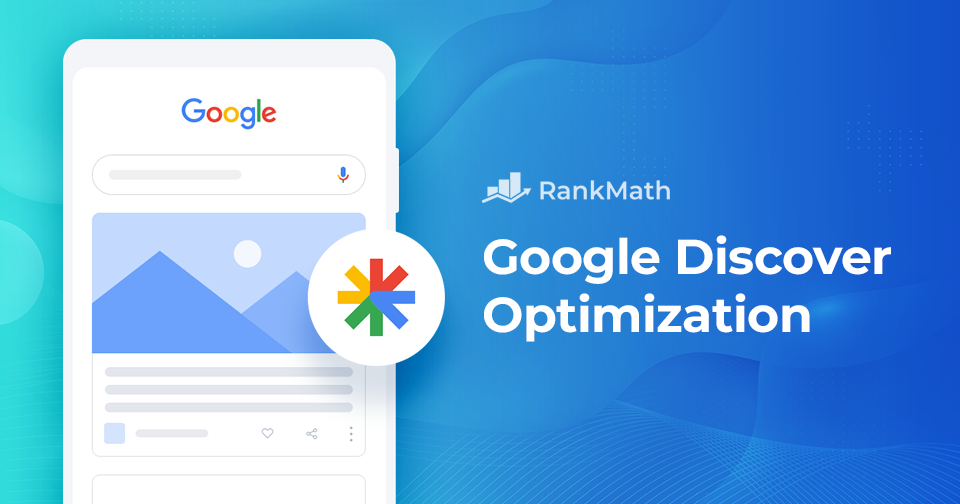In today’s fast-paced world, you’re always looking for new approaches to expand your reach and attract more readers to your content.
Staying up-to-date with the latest tools and techniques is essential to help you grow your audience.
One powerful tool that has gained significant attention recently is Google Discover. It helps you explore interesting topics, presenting you with articles and other content as per your preferences on mobile devices.
In this post, we’ll discuss the ins and outs of Google Discover and how you can optimize your blog content to make the most out of this powerful content discovery tool.

So, let’s begin the discovery!
Table Of Contents
1 What is Google Discover?
Google Discover is a content discovery tool available on mobile devices and offers personalized content recommendations. You can easily access it as it’s a feature in the Google app and the Chrome mobile browser.
This personalized content recommendation feed aims to keep you interested in high-quality and relevant information.
Google Discover presents content cards that are relevant based on your browsing history, search activity, and interests.

Leveraging the power of Google Discover can be a game-changer for your content marketing strategy. With its massive user base and personalized content recommendations, Google Discover can drive significant traffic to your blog, increase your brand exposure, and help you connect with new readers genuinely interested in your niche.
2 How Does Google Discover Generate Your Feed
Google Discover is personalized for you, but how exactly does that work?
To understand how Discover generates your feed, it’s essential to recognize the factors influencing its content selection process. According to Google, they use the following data to create the feed:
- Your Google product activity across all platforms (e.g., your search activity, watched YouTube videos, and engagement with Discover results)
- Location History
- Location Settings
- Topics you follow
Your current interests, hobbies, and other relevant information are all reflected in the feed. As you interact with this content by clicking, reading, or spending time on specific articles, Google Discover continually refines its recommendations to provide an increasingly relevant experience.
For instance, let’s say that you’re a big fan of cooking and frequently search for new recipes. Google’s algorithms will note it and show you more cooking-related content in your Discover feed. You might see articles about the latest kitchen gadgets, recipe collections from top chefs, or cooking tips and tricks.
But personalization goes even beyond your search history. Google also considers location, device information, and browsing behavior to create a complete picture of your interests and needs.
For instance, if you frequently search for bakery shops in your area, Google might show you a list of nearby bakeries in your Discover feed.
By delivering relevant and engaging content, Google Discover keeps you hooked, consequently increasing the chances of having your content discovered by potential site visitors. Thus, creating high-quality, unique, and timely content is imperative for success on this platform.
You can also read the Google Search Help article to customize your Discovery feed further.
The next section is exactly what you’re looking for. We’ve covered the key areas that’ll help you optimize for Google Discover.
3 Optimize For Google Discover: Key Areas to Focus On
Optimizing for Google Discover involves understanding its algorithms, creating high-quality content, and aligning your content with user interests. Let’s dive right into the details of how to optimize for Discover.
- Understand Google Discover
- Optimize for Mobile
- Understand and Enhance E-E-A-T Signals
- Create High-Quality and Evergreen Content
- Focus on User Intent
- Use High-Quality Images and Videos
- Optimize Headlines, Titles, and Meta Description
- Support Your Entity With Structured Data
- Refresh Your Evergreen Content Periodically
- Try Google Web Stories
3.1 Understand Google Discover
To optimize for Google Discover, it’s important to understand how it works. Google Discover uses machine learning algorithms to analyze a user’s search history, browsing behaviour, and interests to display relevant content on the Discover feed.
According to the product announcement, Google Discover uses two primary mechanisms to determine what content is displayed:
- Google News AI/ML to bring various perspectives on the latest news.
- The Topic Layer in the Knowledge Graph to understand user interests and how they progress over time.
3.2 Optimize for Mobile
Google Discover is predominantly accessed on mobile, and hence, it’s necessary to optimize your content for mobile. Ensure your website and content are mobile-friendly and load quickly on mobile devices.
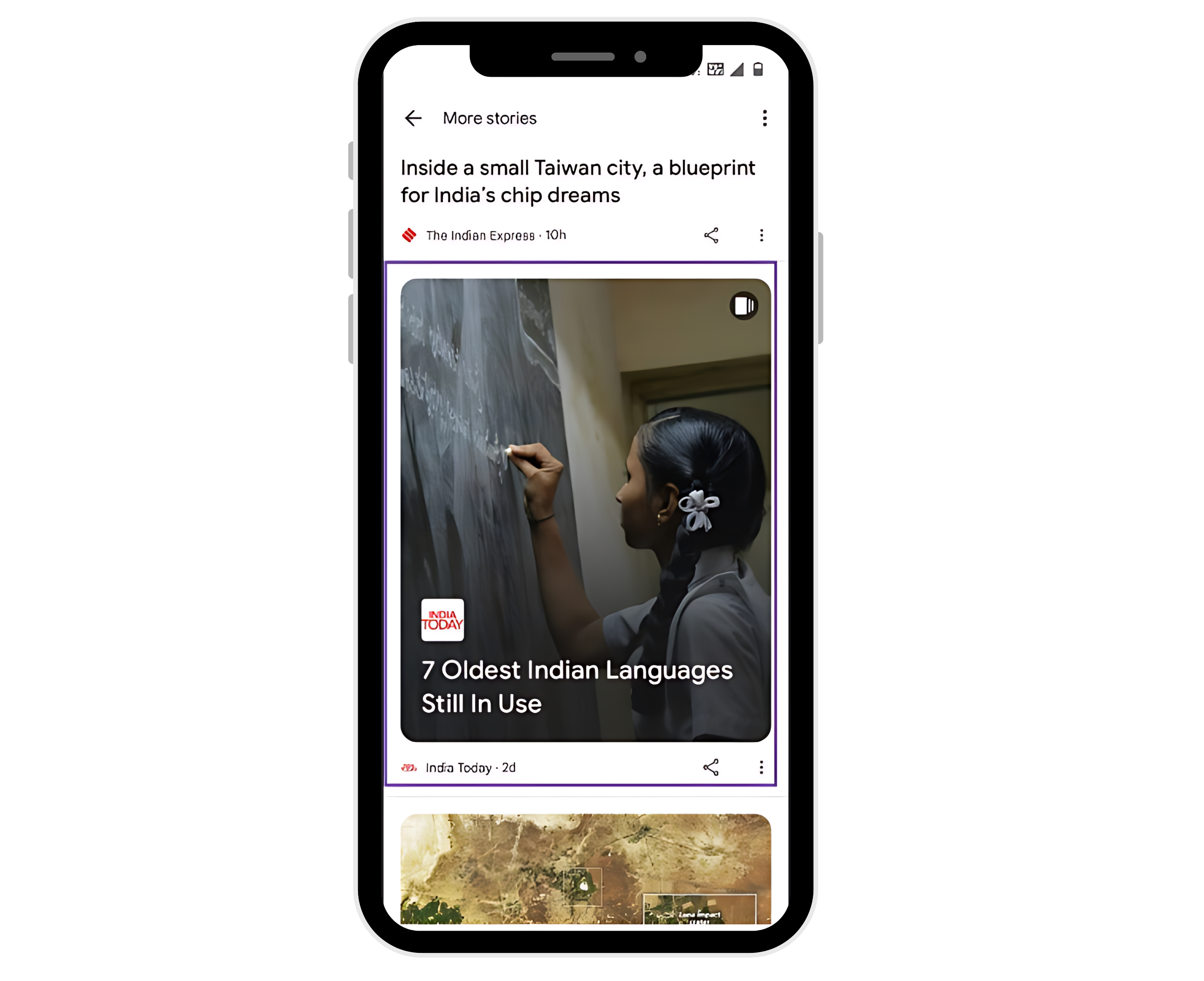
Hence, to be in the game and stand a chance of gaining visibility within Google Discover, you need to have an excellent mobile experience as you do on a desktop. This means making sure that:
- You use responsive design, optimize images and videos for mobile, and ensure that your content is easy to read and navigate on small screens.
- Ensure that any images or other visuals you use in the article are readable and easily accessible. If not, ensure that when a user clicks on the image, it expands and allows for zooming.
3.3 Understand and Enhance E-E-A-T Signals
Understanding and enhancing E-E-A-T signals for Google Discover involves showcasing your experience, expertise, authoritativeness, and trustworthiness through high-quality content, proper attribution of sources, a strong online reputation, and engagement with your audience.
E-E-A-T is a set of criteria that Google uses to evaluate the quality and credibility of content across the web, including the content shown in Google Discover, which, as mentioned before, is a feature that displays personalized content recommendations to you on your mobile devices.
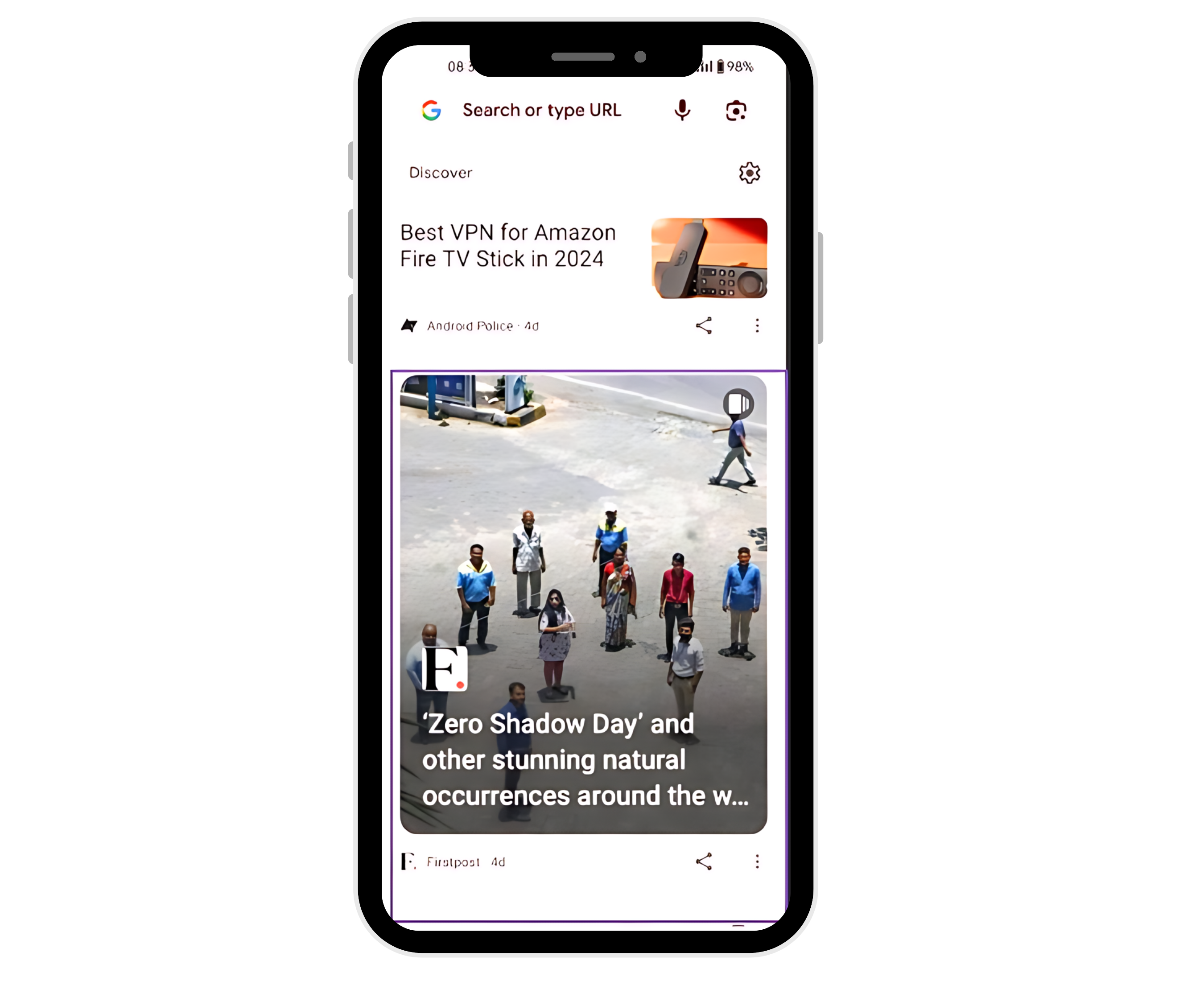
3.4 Create High-Quality and Evergreen Content
An important element of Google Discover optimization is content quality. Google has publicly announced that Google Discover will feature a mix of new and evergreen content.
Your content should be well-written, clear, engaging, and compelling. Additionally, it should be unique and innovative and add value for your users. For instance, if you have a food blog, you can create recipe videos that are visually appealing, fast, and easy to follow.
Stay away from duplicate content and potentially spammy, low-quality content. Google Discover prefers solid, trustworthy content that provides a good user experience.
3.5 Focus on User Intent
Google Discover relies on user behavior and interests, so understanding your user’s intent is also important.
Understand what your users are looking for and create content that aligns with their interests and preferences. Conduct keyword research to identify the popular topics and keywords among your audience.
For instance, if your website is about travel, you can create articles or videos that cater to specific travel interests, such as “8 Things to do in Diu on a Weekend Gateway”.
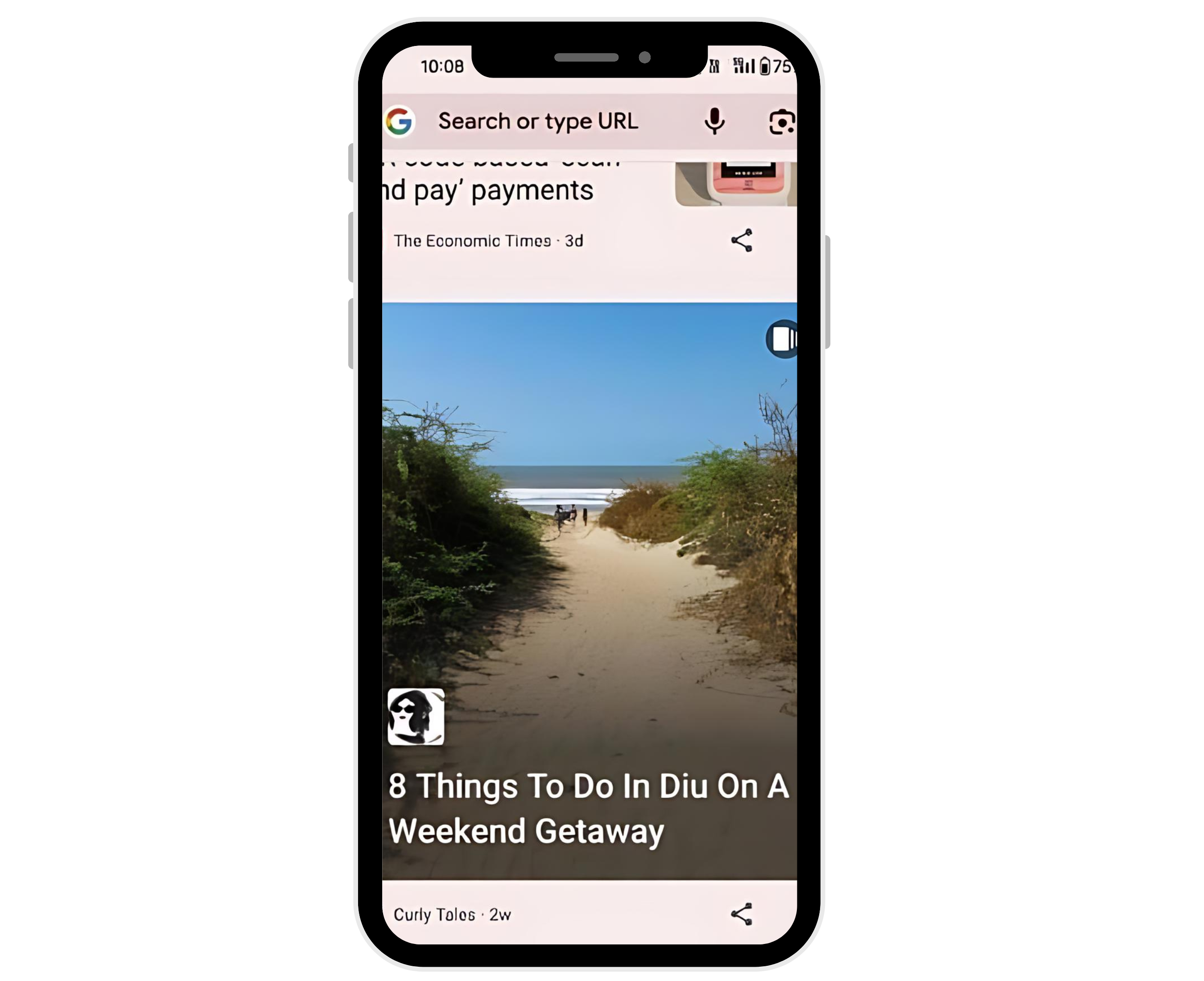
3.6 Use High-Quality Images and Videos
Visual content that enhances the user experience and provides value can help your content stand out in Google Discover.
Use high-quality images and videos that are relevant to your content. Images must have a pleasing aesthetic, be properly optimized for the web, and have corresponding descriptive alt tags.
Your content must include an image that meets the requirements listed below in order to be displayed in Google Discover:
- It should be a minimum of 1200px wide
- It should be enabled by the
max-image-preview:largesetting - It should not be a site logo
You can also check out our video, which will help you optimize your images further.

Images should be engaging, well-produced, and properly tagged with relevant keywords. For instance, if you have a fashion blog, you can use high-resolution images of various outfits and accessories to make your content visually appealing and shareable.
3.7 Optimize Headlines, Titles, and Meta Description
Create compelling and catchy headlines that reflect the content of your article or webpage. To ensure Google understands your content’s topic, use clear, precise language and relevant keywords.
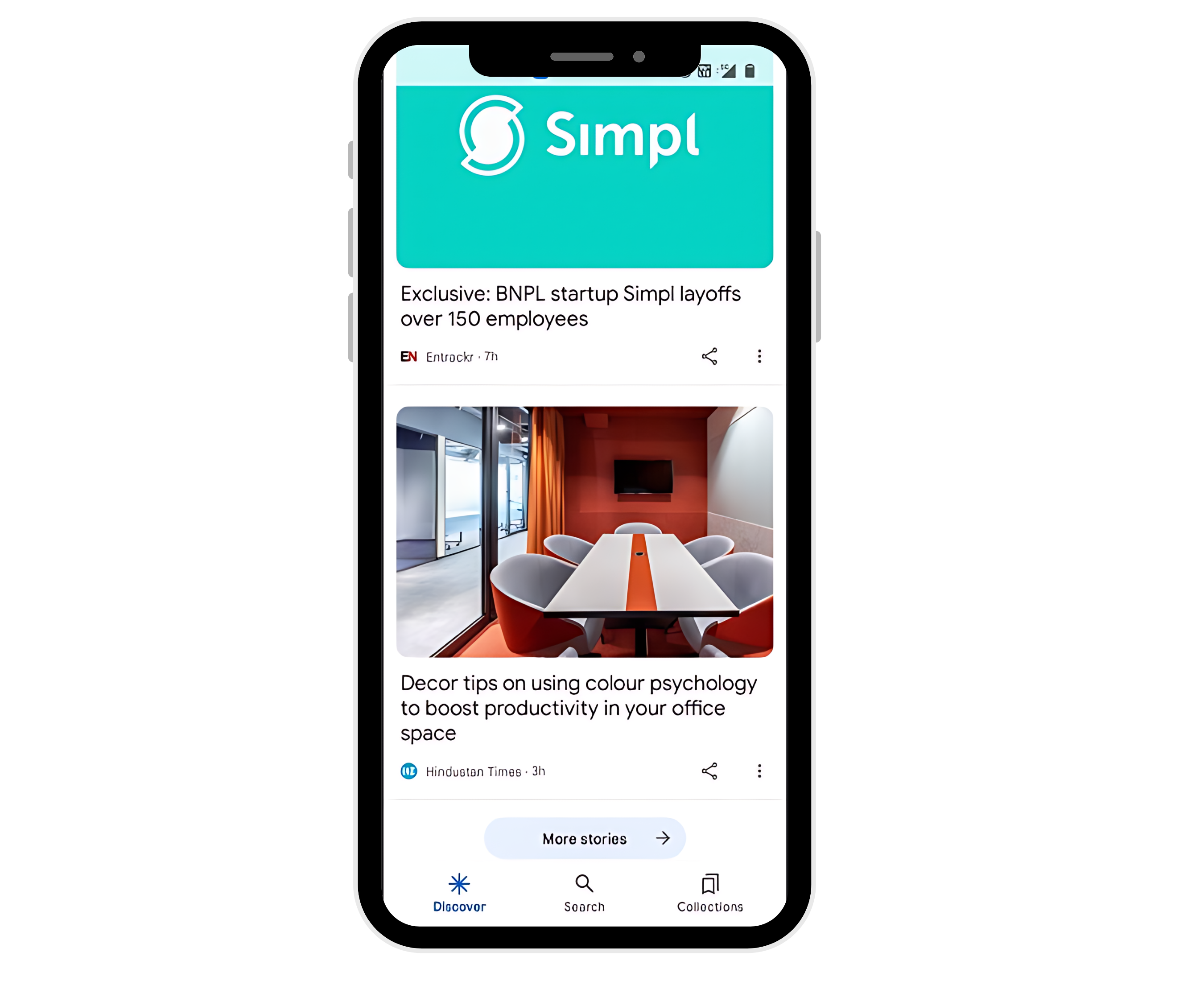
Write concise and engaging meta descriptions that provide a preview of your content and entice users to click through your site. Rank Math’s Title and Meta Description features will help you optimize the titles of all your posts, no matter how big your website is!
A poor user experience and decreased engagement might come from clickbait or deceptive headlines, so shrew them away.
So, say no to clickbait and yes to engaging content that wins over Google and your audience.
3.8 Support Your Entity With Structured Data
An effective way to increase your website’s visibility and interaction on Google Discover is Structured Data.
Using Schema markup is one of the best approaches for implementing Structured Data for Discover. It allows you to provide comprehensive information about your organization, including the name, logo, description, contact information, and much more.
For instance, if you have a website that offers recipes, you can use the recipe schema markup to provide structured data about the recipe’s name, ingredients, cooking time, and ratings. This information can be displayed in Google Discover as a rich snippet, including an eye-catching image, which can further entice your users to click on your content.

3.9 Refresh Your Evergreen Content Periodically
Google values fresh and evergreen content, and regularly updating your content can positively impact your search rankings. When you provide reliable and up-to-date content, it establishes you as an expert in your niche and also builds trust with your audience.

Not only this, but it also helps you to earn Discover clicks!
With that said, it’s also important to follow Google Discover’s content policies. Violating these policies can result in your content being removed from Google Discover.
3.10 Try Google Web Stories
Google announced that they support Web Stories in the Discover feed.
One of the biggest advantages of using Google Web Stories is their potential to reach a massive audience through Google Discover. Google Web Stories for Discover offers a fun, engaging, and visually stunning way to captivate your audience and expand your reach.
Their mobile-first approach, interactive elements, and potential to reach millions of users through Google Discover can be game changers for your online presence.
So why wait?
Dive into the world of Google Web Stories and unlock a whole new realm of creating possibilities for your website.
4 Track Your Discover Performance in Google Search Console
Google algorithms are constantly evolving, and staying informed about your content’s performance in Google Discover can help you adapt your strategy accordingly.
By tracking your performance in Google Search Console, you can gain valuable insights into your content’s performance and optimize it for better visibility and engagement with your target audience. It’s like counting how many new friends you make each day so you can see if you’re popular or not.
You can track your Performance report for Discover in the Search Console. You can keep a check on metrics such as impressions, clicks, CTR, and average position, which provide a clear picture of how often your content is displayed, how many users are clicking on it, and how it ranks compared to other content.
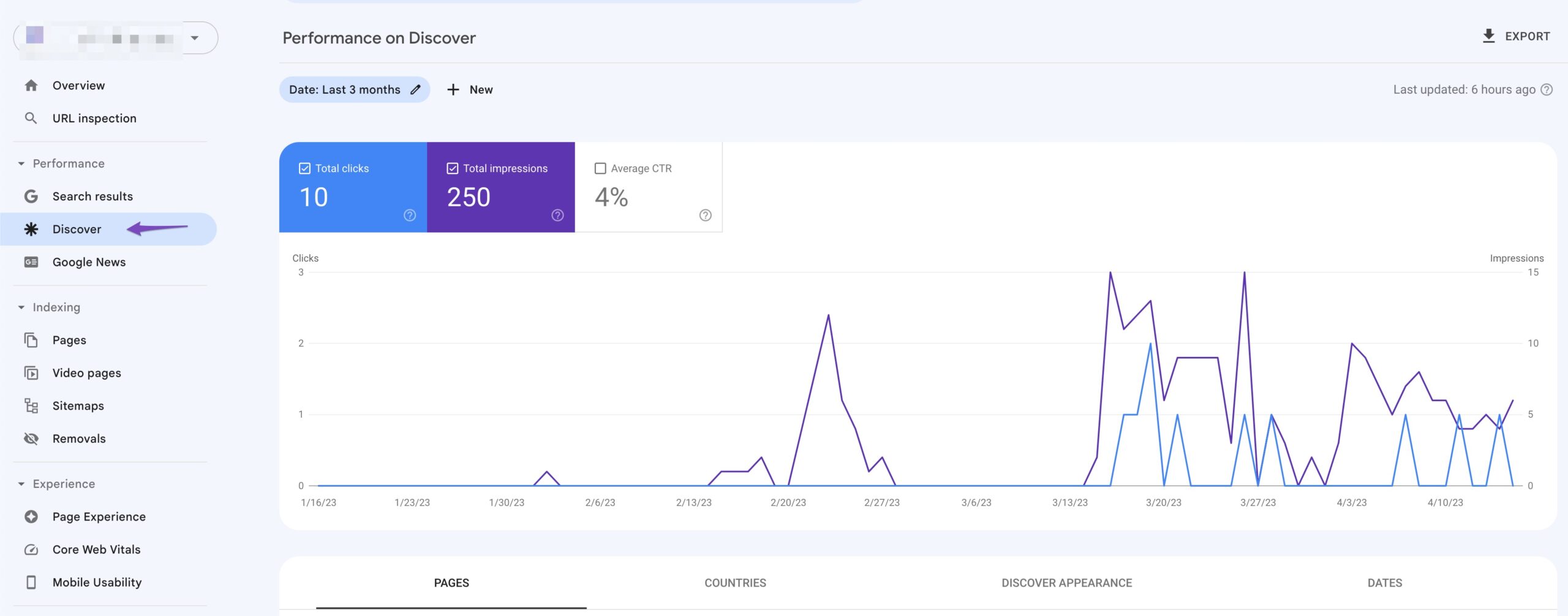
It is also important to note that not all types of content perform well with Discover. Discover might not recommend content like job applications, petitions, forms, code repositories, or satirical content without any context.
Also, the traffic from Google is short-lived, and you shouldn’t rely on Google Discover for consistent traffic like search results.
Google’s John Mueller responded to a hangout question during business hours regarding the potential causes of a sharp drop in Discover traffic. His response includes techniques for identifying on-page problems and Google Discover-specific content guideline breaches. (Watch at the 47:05 Minute Mark)
5 Frequently Asked Questions
What is the difference between Google Discover and Google Search?
Google Discover is a personalized content feed that shows content to users based on their interests, while Google Search is a search engine that allows users to enter search queries and retrieve relevant search results.
Is Google Discover beneficial to your content?
Google Discover is beneficial for your content as it presents related articles based on the information you seek. You can find the information you may be looking for even if you do not search for it.
Does Google Discover show ads?
Yes, Discover may show sponsored content or ads in the content feed labeled as Sponsored or Ad to indicate that it is paid content.
Is Google Discover free to use?
Yes, it is a free feature included with the Google app and mobile website.
Is it possible to monetize traffic from Google Discover?
Yes, monetizing traffic from Google Discover using advertising and other monetization techniques is possible. However, focusing on providing value and creating high-quality content is also necessary.
Why Google Discover traffic might drop or increase?
Google has cited three factors—changing interests, content types, and Google Search updates—that can influence the visibility and traffic of content on this platform. Moreover, Google has emphasized the potential risks of relying on Discover traffic. They warned against building a dependency on Google Discover for website traffic.
Why is my content not appearing on Google Discover?
There could be several reasons why your content is not appearing on Google Discover. Here are a few things you might want to check:
– Ensure your content is timely, insightful, and aligns with the interests of your audience.
– Be sure that your content is in accordance with Google’s content policies.
– Avoid using site logos as article images. Instead, use large images at least 1200px wide that are likely to capture your audience’s attention.
– Use captivating titles that reflect the essence of your content without sounding clickbait
6 Google Discover Optimization: A Game-Changer for Your Brand!
Google Discover is a wonderful tool that can revolutionize how you browse the internet.
Finding content that truly resonates with your interests can feel like searching for a needle in a haystack. That’s where Google Discover comes in to save the day and bring content bliss right to your fingertips!
Optimizing your content for Google Discover can be a game-changer for your website traffic and brand exposure. By following the tips we’ve discussed and continuously monitoring your performance, you can tap into its potential and boost your online presence.
So dive into the world of content discovery with Google Discover, and let your game-changing journey begin! You never know what amazing content you may find! If you like this post, let us know by Tweeting @rankmathseo.
